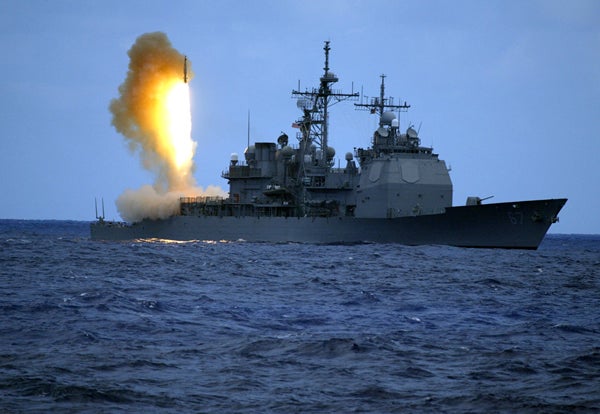A July 24 article in the online Mobile Magazine describes the advanced technology of Raytheon’s Exoatmospheric Kill Vehicle (EKV) for destroying missile warheads in space. The article is right to tout the capabilities of this and similar anti-missile kill vehicles.
The EKV is the payload portion of anti-missile missiles and is designed to destroy attacking missile warheads by the force of collision—frequently referred to as “hit-to-kill” systems—and without any explosive warheads. This technology is effective because the EKV intercepts the attacking warhead at a speed of 22,000 miles per hour.
With these speeds, the kill vehicle carries such a high level of latent force (called kinetic energy) that the collision will effectively vaporize the attacking warhead. The key to EKV technology is that on-board sensors and computing capabilities make the system incredibly maneuverable and accurate.
Systems like the EKV are already operational in both land-based and sea-based interceptor missiles. A new version of the EKV, currently in development, has had a guidance fault, but the cause of this fault has been identified, and confidence is high that it is being corrected.
Given the strong track record of testing success with EKV technology in both land-based and sea-based interceptor missiles, it is time for the government to explore what is almost certain to be the most effective deployment mode for this technology: to place EKV-armed interceptors in space.
Most ballistic missiles fly through space, and placing the interceptors in space—as opposed to launching them into space following the launch of the attacking missile—has obvious advantages in terms of coverage and the ability to intercept attacking missiles in the early stages of flight. In the latter case, the advantage is that the EKV may destroy the attacking missile before it releases decoys designed to confuse the system.
A critical element in the ability of the U.S. to achieve and maintain a strong defense posture is its capacity to pursue and ultimately perfect advanced military technology. The EKV is a prime example of this capacity.
U.S. security is immensely improved as a result of the EKV, and it should be among the highest priorities of both the President and Congress to see that U.S. defense technology programs are not restrained by either inadequate funding commitments or arms control agreements.
